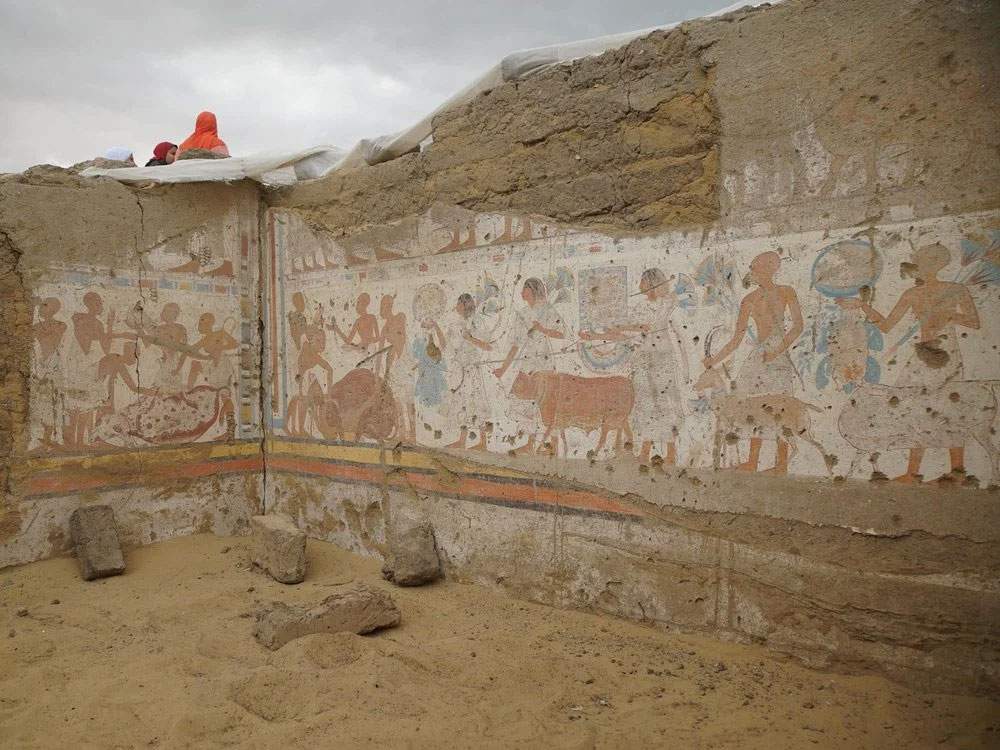Important discovery in Saqqara, Egypt, where a mission from Cairo University’s Faculty of Archaeology, led by Professor Ola El-Ajezi, has unearthed the tomb of Ptah-M-Waya, treasurer of Pharaoh Ramses II. Announcing the discovery was Mustafa Waziri. The importance of the discovery, Waziri noted, is mainly due to the positions Ptah-M-Waya held during his career: he was in fact royal scribe, head of the treasury, and in charge of offerings in the temple of Ramses II in Thebes.
This important archaeological discovery, explained Mohamed Othman Elkhosht, chancellor of Cairo University, follows a group of discoveries made by the Egyptian university’s mission in the Saqqara region, which underscores the extent of the university’s interest in fieldwork alongside research and scholarly work: these are priorities that the university intends to pursue in order to advance knowledge in all fields.
Excavations by the Faculty of Archaeology in Cairo date back to the 1970s, when they began on the site of Saqqara for the purpose of finding Coptic monasteries, while the search for ancient Egyptian tombs began under the direction of Sayed Tawfiq between 1983 and 1986: since then, many burials dating back to the age of Rameses (the “Ramesside period,” which spans the 19th to 20th dynasties, i.e., between 1292 and 1075 BCE.C.), including that of Vizier Nefer-Ranpet. In contrast, the mission led by Professor Ola Al-Ajezi began in 2015.
The tomb of Ptah-M-Waya, like many other tombs of the Ramesside era, consists of a large entrance leading inside a building decorated with scenes from the life of the deceased. The burial of Rameses’ treasurer was preceded by an entrance built of stone, carved with scenes of the tomb’s owner. This entrance led to a first hall with painted and colored plaster walls, and among the most important of these scenes are those depicting the procession of the transport of offerings, ending with a scene of the slaughter of a calf. Many stone blocks were found under the sand, as well as many Osirian columns, some of them lying in the sand and others standing in their original place. All of these pieces will be studied and then returned to their original locations in the necropolis.
Pictured is the newly discovered tomb
 |
| Egypt, tomb of Ramses II's treasurer discovered in Saqqara |
Warning: the translation into English of the original Italian article was created using automatic tools. We undertake to review all articles, but we do not guarantee the total absence of inaccuracies in the translation due to the program. You can find the original by clicking on the ITA button. If you find any mistake,please contact us.